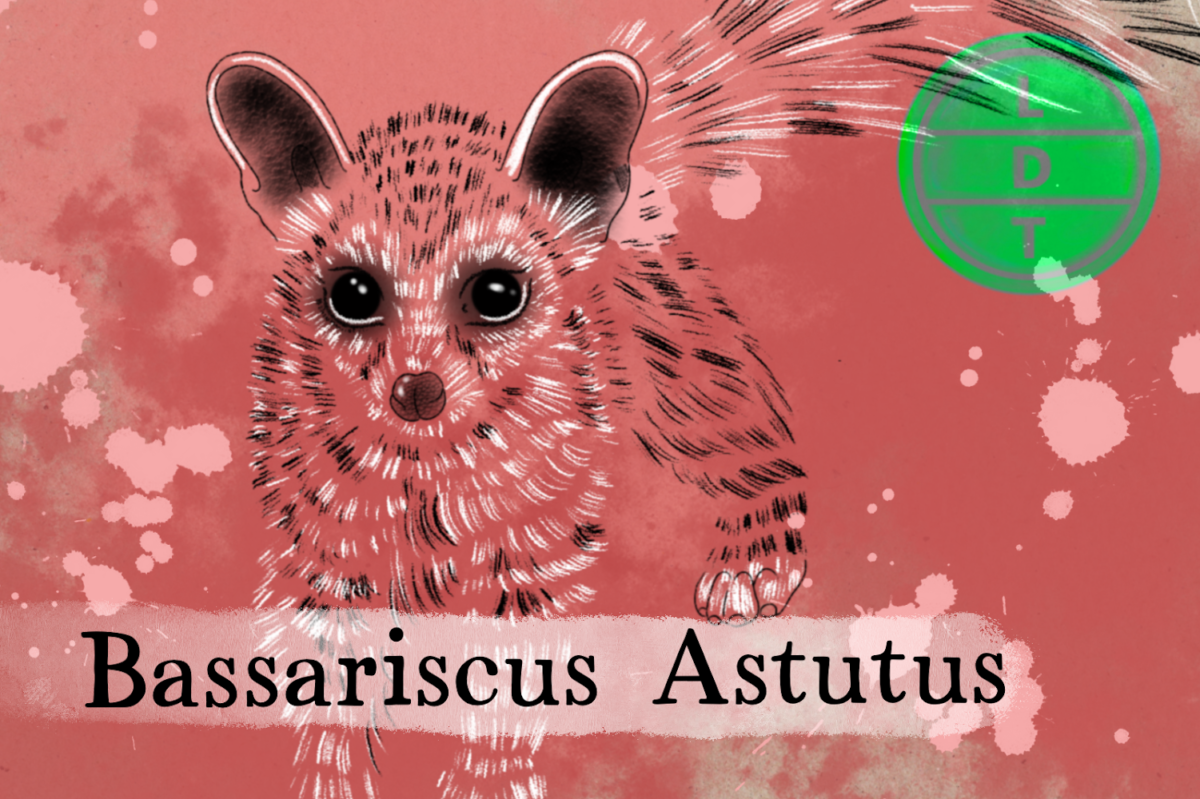“..and today we are talking about an American mammal that you might not already know about.”
If you’re a denizen of North America, you probably think you know every furry critter in these parts. You’ve got your bears, cats, wolves, and even a muskrat or two. But there is a lesser known mammalian that may lurk in the dark of your backyard in the wee small hours of the morning, that you’ve never heard of at all. The ringtail is the essence of the word critter, and yet, it’s a lesser known member of the American Animal kingdom. But learning more about a place you thought you knew is the spice of Life, Death, and Taxonomy.
Description of the Texas Ringtail
- It’s a coati weasel
- Cat-like body, long triangular ears, thin, pointed face, and its titular long fluffy tail with black and white rings. Something between a racoon and a ring-tailed lemur.
- The coat is dark brown on the back, head, and legs with white rings around the eyes and a cream-colored underside
- Much smaller than a coati, more like a squirrel-cat
Measure Up
Body Length
- 30–42 cm (12–17 in)
- How many ringtails go into the length of Texas north to south?
- Hint: Texas is the second largest state. East to west it is around 773 miles.
- 2,881,016 ringtails. North to South, Texas is 801 miles (1,289 kilo)
Weight
- 870 to 1500 grams (approximately 1.5 to 3.3 pounds)
- How many ringtails go into the weight of the BlackFly ultralight aircraft?
- Hint: Developed by Opener, this all-electric personal vertical take-off and landing (VTOL) aircraft is designed for easy flight from small grassy areas. Its cruise speed is 62 mph.
- 94.8 ringtails. The BlackFly is 313 lbs (142 kg)
Fast Facts about the Texas Ringtail
- Range: From the Midwst and Southeast US from California to Texas to the south of Mexico. Also found as far north as Oregon on the Pacific coast.
- They like arid, desert habitats with lots of rocks and old trees to make its home. It also likes caves, mine shafts, canyons, etc.
- Diet: Small vertebrates such as passerine birds, rats, mice, squirrels, rabbits, snakes, lizards, frogs, and toads are the most important foods during winters. However, the ringtail is omnivorous, as are all procyonids. Berries and insects are important in the diet year-round, and become the primary part of the diet in spring and summer, along with other fruit.
- Behavior:
- Nocturnal
- Loves to climb
- Mate in the spring and have up to 4 kits per litter
- Kits can hunt for themselves in 4 months, are sexually mature at 10 months, and live for a total of 7 years
- Have to keep an eye out for predators including foxes, coyotes, raccoons, bobcats, hawks, and owls
- Just like Joe Rogan, it will release a pungent and powerful Elon Musk if startled
- They can be more or less domesticated (or tamed) and have been historically kept by miners to handle mice, which is why they’re called the miner’s cat.
Major Fact: All-Terrain Climbers
Ringtails are excellent climbers, showcasing remarkable agility and adaptability in climbing both rocks and trees.
Texas ringtails thrive in rocky, semiarid conditions. They prefer habitats such as rock piles, stone fences, canyon walls, and talus slopes.
Vertical Ascension: Ringtails can ascend vertical walls, whether they’re rocky cliffs, tree trunks, or even cacti. Their strong claws and flexible limbs allow them to navigate challenging terrain with ease.
180-Degree Hind Feet Rotation: These nocturnal ninjas can rotate their hind feet 180 degrees. This unique adaptation helps them maintain a secure grip while descending the same structures they’ve climbed.
Stemming and Crack Climbing: Ringtails are adept at stemming, a technique where they wedge themselves into small cracks or crevices in rocks. Their ability to move smoothly through narrow spaces allows them to explore their rocky homes.

